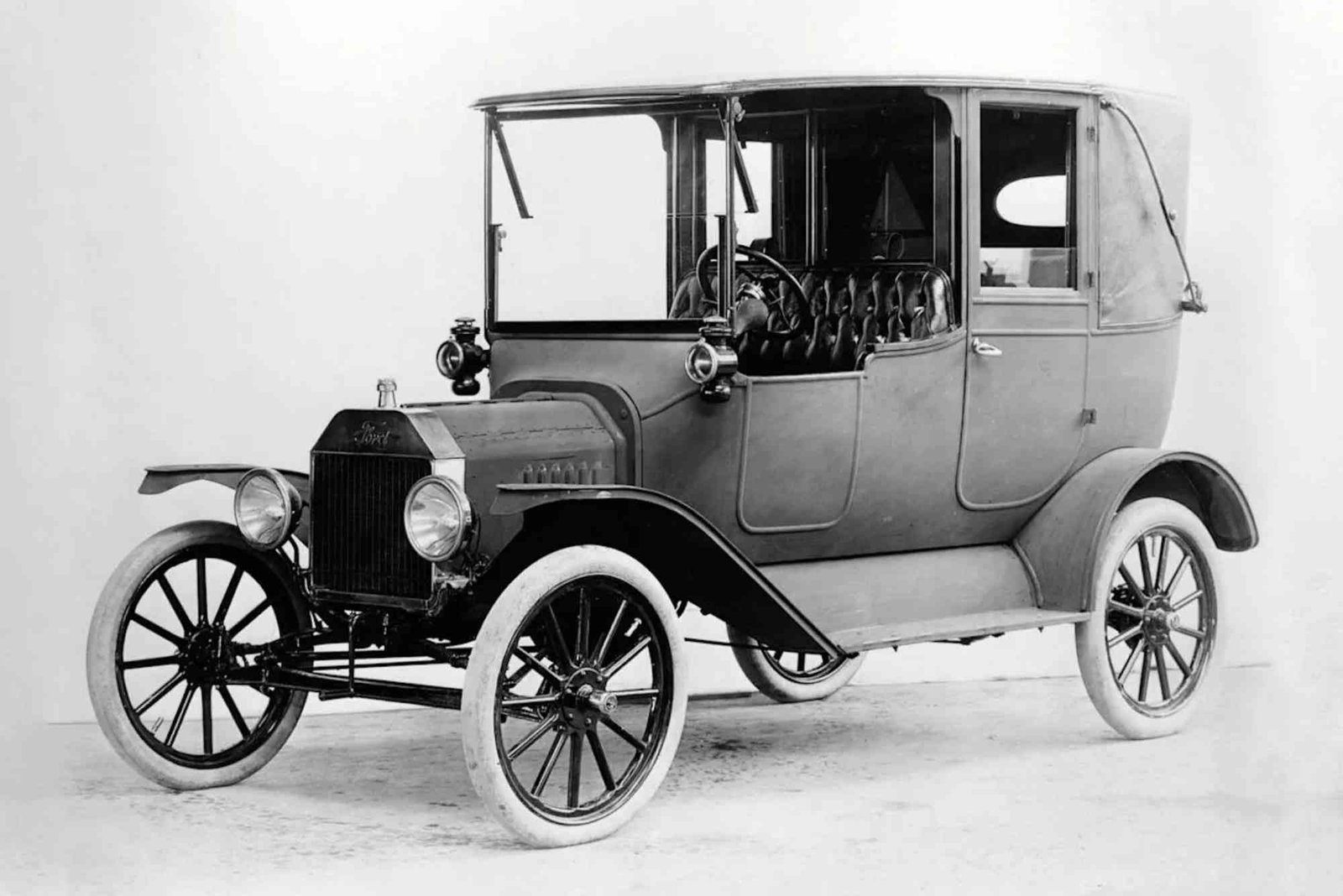Introduction
The question “Where was the first automobile built?” opens a fascinating window into the history of innovation that reshaped human civilization. Automobiles are now an inseparable part of daily life, but their origin story is more intricate and inspiring than most people realize. In this Where Was The First Automobile Built — Complete Guide (2025), we explore how the first car came into existence, who built it, and how it revolutionized transportation forever.
Understanding this evolution helps us appreciate the progress of technology and engineering. This complete where was the first automobile built guide will take you from the earliest experiments to the first successful gasoline-powered vehicle and the countries that played vital roles in the automobile revolution.
The Birth of the Automobile Revolution
The invention of the automobile was not a single event but rather a series of innovations spanning several decades. Before the modern car, there were countless attempts to create self-propelled vehicles using steam, electricity, and later gasoline. The earliest prototypes can be traced back to Europe, where inventors were experimenting with new mechanical technologies in the 18th and 19th centuries.
The idea of a vehicle that could move without horses fascinated inventors. Steam-powered carriages appeared first, but they were large, heavy, and impractical for everyday use. It wasn’t until the late 1800s that the foundation for the modern automobile was laid — thanks to Karl Benz, who built the first practical motor car in Germany.
Karl Benz and the First Automobile
In 1885, Karl Benz, a German mechanical engineer, built the Benz Patent-Motorwagen, widely recognized as the world’s first automobile. It ran on an internal combustion engine powered by gasoline, marking the birth of the modern car. The vehicle had three wheels, a lightweight design, and could reach speeds up to 10 miles per hour — impressive for its time.
Benz’s invention was patented in 1886 under DRP 37435, officially making it the first automobile. What set Benz’s vehicle apart was not just the engine but the combination of engineering innovations that made it functional, reliable, and reproducible. His design included essential components like a differential, electric ignition, and a carburetor — features that still form the foundation of vehicles today.
Where Was the First Automobile Built?
The first automobile was built in Mannheim, Germany. It was in this industrial town that Karl Benz constructed his Motorwagen in a small workshop. The creation represented not only a technological milestone but also a cultural shift toward mechanized mobility.
Germany became the cradle of automobile engineering because it combined precision craftsmanship, mechanical expertise, and an environment that encouraged experimentation. The Benz Patent-Motorwagen No. 1, built in Mannheim, remains preserved as a historic artifact — a symbol of how a single invention can redefine human progress.
The Role of Bertha Benz: The First Long-Distance Drive
While Karl Benz invented the first automobile, it was his wife, Bertha Benz, who proved its practicality. In 1888, without informing her husband, Bertha embarked on the first long-distance automobile trip, driving from Mannheim to Pforzheim — a journey of about 65 miles.
Her trip showcased the reliability of the Motorwagen and demonstrated its potential for real-world travel. Along the way, she innovatively solved mechanical problems, using her hatpin to unclog a fuel line and her garter as insulation. This historic journey was crucial in gaining public trust and visibility for the automobile.
How the First Automobile Changed the World
The invention of the first automobile revolutionized society in several ways. It made personal mobility possible, connecting people and communities like never before. Roads, industries, and economies evolved to accommodate this new technology.
The automobile also spurred advancements in materials science, fuel production, and infrastructure. Within decades, it became the backbone of modern transportation. Today’s vehicles — from electric cars to autonomous systems — owe their existence to Karl Benz’s workshop in Mannheim.
The Evolution After Benz’s Invention
Following Benz’s success, numerous inventors and companies across Europe and America improved upon his design. In 1886, Gottlieb Daimler and Wilhelm Maybach, also from Germany, created the first four-wheeled vehicle powered by a high-speed gasoline engine.
By the 1890s, France became a hub for automobile production, with companies like Peugeot and Renault emerging as early manufacturers. Across the Atlantic, Henry Ford in the United States introduced the concept of mass production in 1913, making cars affordable and accessible to the general public.
This rapid evolution laid the groundwork for the global automotive industry, leading to today’s innovations in electric and autonomous vehicles.
Global Influence of the First Automobile
The ripple effect of the first automobile reached every corner of the globe. Countries invested in road networks, fuel industries, and mechanical education. The automotive industry became one of the largest sectors in the world, employing millions and driving economic growth.
In the modern age, the focus has shifted from gasoline engines to sustainable technologies. Yet, the pioneering spirit of Karl and Bertha Benz continues to inspire every new development, from electric vehicles to AI-powered driving systems. For readers interested in deeper industry analysis and historical development, exploring automobile insights can provide an even broader perspective on this transformation.
Key Innovations Introduced by Karl Benz
Karl Benz’s first automobile was more than just a vehicle — it was a system of integrated technologies. His design introduced several groundbreaking elements still relevant today:
-
Internal combustion engine powered by gasoline.
-
Electric ignition system for smooth startup.
-
Differential gear for stable turning.
-
Chassis and frame built for lightweight strength.
-
Simple controls, including steering and braking systems.
These innovations defined the mechanical structure of modern vehicles and are essential for safety and performance.
Why Germany Became the Hub of Early Automobile Development
Germany’s industrial revolution provided fertile ground for innovation. Its strong mechanical engineering culture, technical universities, and skilled workforce allowed inventors like Karl Benz and Gottlieb Daimler to experiment and refine their ideas.
The German government and private investors also encouraged engineering research. Cities like Mannheim, Stuttgart, and Munich became centers of automotive experimentation. Even today, Germany remains home to world-leading automobile brands like Mercedes-Benz, BMW, and Audi — all tracing their heritage back to Benz’s pioneering work.
Modern Safety and Maintenance Standards
While the first automobile was a marvel of engineering, it lacked the safety features we now take for granted. Modern vehicles undergo strict safety testing and follow guidelines set by authorities like the NHTSA – Vehicle Maintenance program in the United States.
Today’s cars include airbags, anti-lock braking systems, stability control, and advanced driver-assistance technologies — all evolved from the desire to improve safety and efficiency. These innovations continue to build upon the foundation laid by early inventors.
The Automobile’s Legacy in the 21st Century
As we move deeper into the 21st century, the automobile remains a symbol of human ingenuity. From combustion engines to electric vehicles and autonomous driving systems, every stage of automotive evolution traces back to that small workshop in Mannheim.
Manufacturers are now focusing on sustainability, renewable energy, and intelligent design. First Automobile Built The global shift toward electric vehicles represents the next chapter in this ongoing story — one that echoes Benz’s original vision of innovation and mobility for all.
(FAQs)
Who built the first automobile in the world?
The first automobile was built by Karl Benz in 1885 in Mannheim, Germany. His Benz Patent-Motorwagen is considered the first true car powered by an internal combustion engine.
Why is Karl Benz considered the inventor of the car?
Karl Benz’s invention combined several mechanical innovations into one functional vehicle, making it the first practical and reliable automobile in history.
What was the first car’s speed?
The Benz Patent-Motorwagen could reach a top speed of around 10 miles per hour (16 km/h).
What was the first car powered by?
It was powered by a single-cylinder, four-stroke internal combustion engine using gasoline as fuel.
Where can I learn more about early automobile history?
You can visit the full complete where was the first automobile built guide to explore the detailed timeline and development of the first car.
The story of where the first automobile was built is more than a historical fact — it’s a journey of innovation, courage, and transformation. Karl Benz’s work in Mannheim, Germany, in 1885 marked the beginning of a new era in human mobility. From that moment onward, transportation, industry, and society evolved in extraordinary ways.
Today, as we embrace electric and autonomous vehicles, the legacy of Benz’s invention lives on. Understanding where and how it all began helps us appreciate how far we’ve come. For deeper knowledge and modern trends, explore automobile insights and stay updated with the latest developments in automotive technology.
The automobile’s evolution from the Benz Patent-Motorwagen to today’s advanced cars reminds us that innovation is a continuous journey — one that started with a single idea in Mannheim and continues to drive the world forward.







